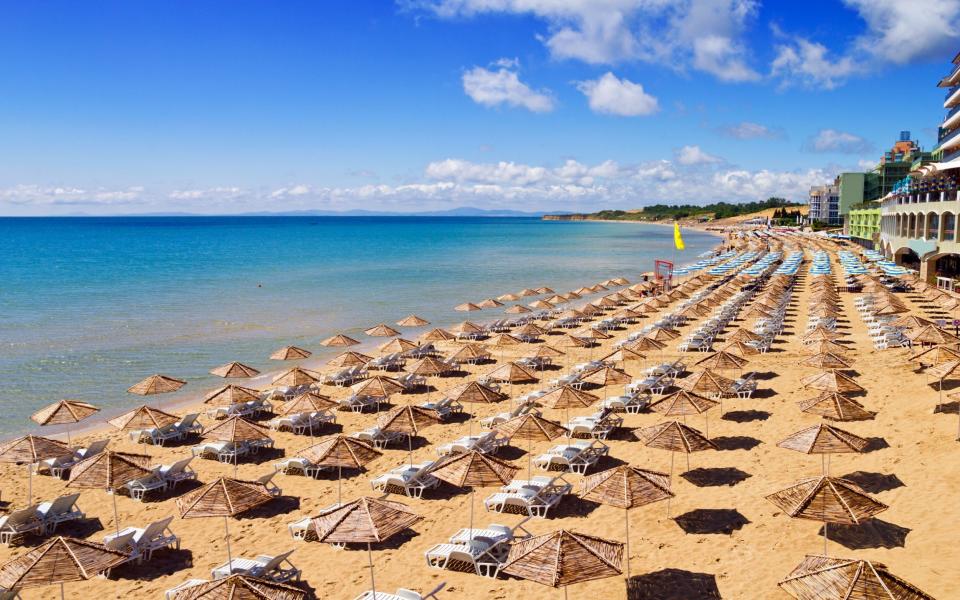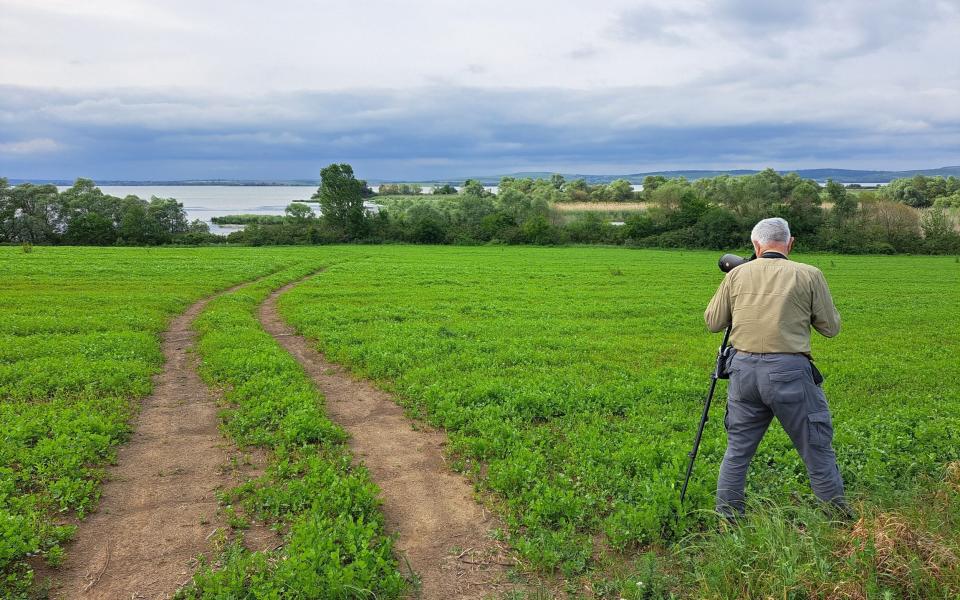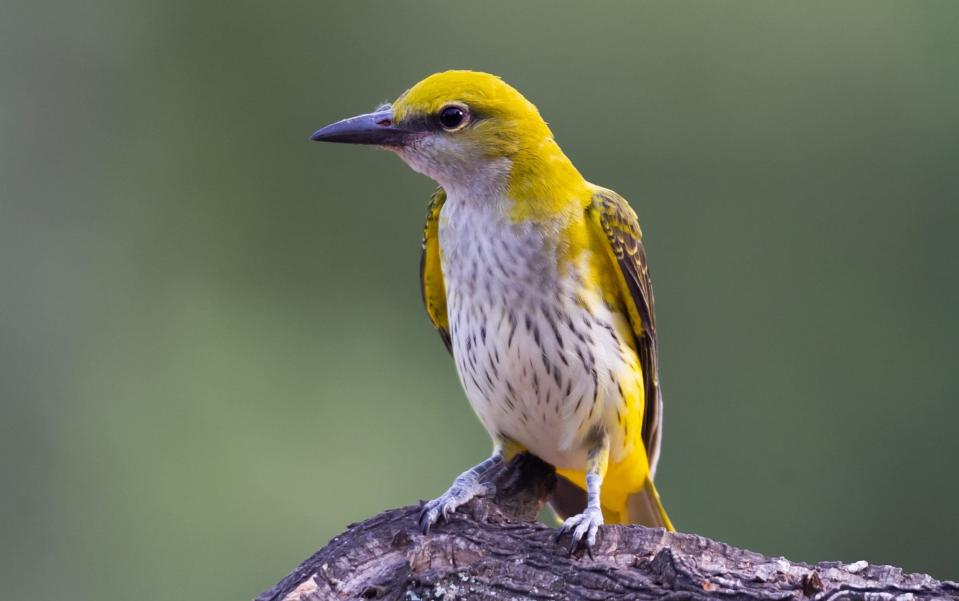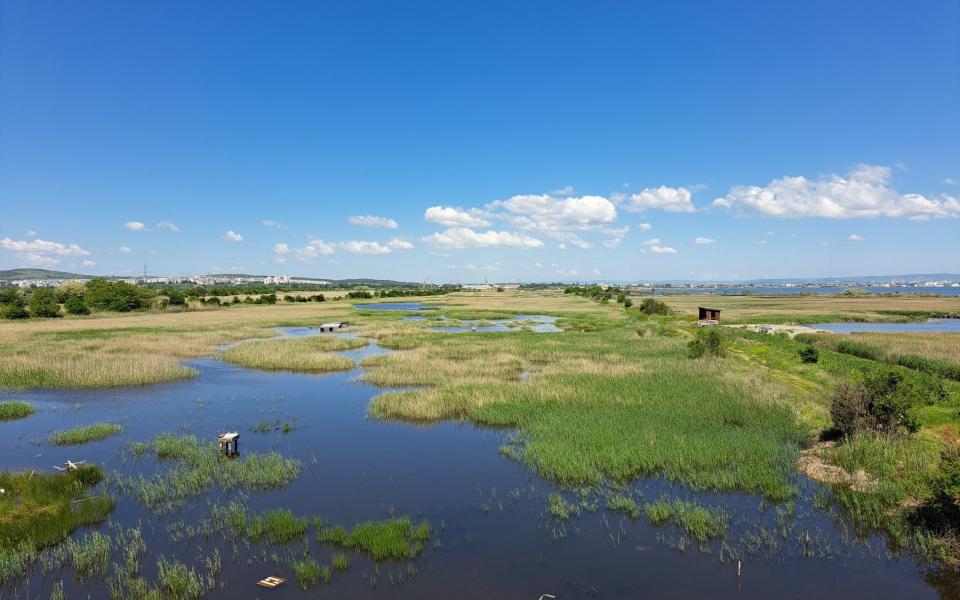If you ever want to experience a time warp, take a trip to Bulgaria’s Black Sea coast. The beach hotels from the 1960s are everything you would expect from accommodations built in the Soviet era and not updated since.
Although my three-star hotel room is pleasant enough and I can fall asleep to the sound of the waves, it is a space where little attention is paid to interior design. But what it lacks in modern style it more than makes up for in value for money.
While budget resorts elsewhere in Europe – Mallorca’s Magaluf, for example, or Faliraki in Rhodes – have tried to improve on their mass-market roots, Bulgaria’s sun-and-sand offerings remain unapologetically cheap and cheerful.
I’m in Nessebar, about half an hour’s drive from Burgas airport (and ten minutes from the wilder Sunny Beach), and my sea view room, with breakfast, costs me £50 a night.
OK, it might not be that sophisticated, but does it really matter when there’s apricot sand outside and I’m only a 15-minute walk from Old Nessebar: a walled World Heritage town that, while touristy, is utterly charming?

Anyway, I didn’t come to Bulgaria for luxury hotels and five-star service. I’m here because – apart from affordable beach holidays – the Black Sea coast offers excellent birdwatching.
The region is not only incredibly biodiverse in itself, but also a bottleneck on the Via Pontica, one of Europe’s most important migration routes. In spring and autumn, birds of all kinds migrate by the thousands as they travel between their summer and winter domains.
And which birds they are. At peak migration times, pelicans, storks and eagles will fly high on the thermals, while others – turtle doves, nightingales, red-footed falcons – pass through at less lofty heights.
Add to this an impressive range of breeding species, from colorful rollers and orioles to regional specialties such as pygmy cormorants, and it’s no wonder Bulgaria is so popular with visiting birdwatchers.
To maximize bird encounters, I hired a bird guide for the day. As the founder of the Bulgarian Society for the Protection of Birds and one of Bulgaria’s leading ornithologists, there is no one better qualified than Petar Iankov.


As we set off from Nessebar one morning in May, Petar explains why Burgas is such a magnet for birds. “The most important thing here is the complex of lakes around Burgas,” he reveals, “which is located at the westernmost point of the Black Sea.
“The four main lakes vary between saline, brackish and freshwater habitats, each surrounded by landscapes that provide birds with the opportunity to breed, winter or pause on their journeys from Africa and the Mediterranean to Poland, Germany, Russia and Ukraine.”
Our first stop is the salty Pomorie Lake. As we get out of the car, we are accosted by the calls of Sandwich, little terns, as the males try to impress potential mates with gifts of silvery fish.
Avocets and stilts enter the breeding season more quietly, with many birds already breeding. We admire a group of pygmy cormorants standing in a line with their wings outstretched to dry: so much smaller and more reptilian-looking than their common cousins I know from back home.


With a lot of ground to cover, we soon move on to Lake Atanasovsko: another saltwater body, but with rather different bird life. The stars of the show here are flamingos that stand upright with their heads submerged and sift the water for shrimp. They look disappointingly pale until a group of them take flight, fluttering away on crimson wings, their long pink legs trailing behind them.
We pause for a picnic at the far end of the lake, where cuckoos call and energetic bee-eaters live up to their name. As we watch the comings and goings of the birds, Petar tells me more about Bulgaria’s wealth of wildlife. “One of the few good things to come out of half a century of communist rule was that technology did not develop as quickly as in Western Europe,” he explains.
“If our harder-to-reach primeval forests had been in Germany, for example, they would have been cut down after the war and our bird life would have been decimated by agricultural chemicals. So when foreign bird watchers started discovering Bulgaria when the Iron Curtain fell, they were amazed at our abundance of wild birds.”


As if to emphasize his point, a medium-sized songbird chooses that moment to perch on a nearby pole. It’s a red-backed shrike: once common in the British countryside, but a species whose disappearance from our islands has been blamed on pesticides.
To liven things up a bit, after lunch we visit an area with lark-rich steppes, via villages with a stork’s nest on every lamppost. In a disused quarry, Petar makes a convincing (but failed) attempt to lure the local eagle owl into view by imitating its call. And at Aquae Calidae, famous since ancient times for its health-boosting hot springs, we fill our bottles with mineral water before returning to the lakes.
The brackish Lake Burgas adds pelicans, grebes and black terns to our list before ending at the PODA Nature Reserve, where the last lake, Mandrensko, meets the sea. Although only a square kilometer in size, this patch of scrub, reeds and open water has yielded sightings of 315 bird species: about a quarter of Europe’s avifauna.


From the visitor center we watch spoonbills and ibises bringing food to their nestlings, while the colony of terns goes berserk as a predatory harrier glides past. It is a beautiful sight, full of energy and life; but there are only a handful of others here to witness this bird spectacle.
“Bulgarians are pragmatic,” says Petar by way of explanation. “Bird watching is not popular nationally because it has no specific purpose.”
But appreciation for nature is essential for its conservation.
“Bulgaria’s biodiversity has been eroded since The Changes [post-communism],” he admits. “It’s important that locals see the value that nature tourism brings to our countryside; we just need more visitors to come and experience it.”
How to do that
Jet2 flies to Burgas from nine UK airports including Birmingham, Bristol, Glasgow, Newcastle, Manchester and London Stansted. Seven nights B&B at Hotel Mirage on Nessebar Beach costs from £619 per person in September, including flights and transfers.
A day of guided birding with Petar Iankov costs around £85 (contact poda@bspb.org). For birding and photography day trips, also from £85, try Nature Monitoring. April/May and August/September are the peak months for migration.